 Last additions - HIROSHIMA 広島県 Last additions - HIROSHIMA 広島県 |
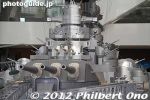
Jan 20, 2013
|
|
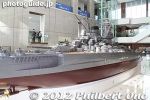
Jan 20, 2013
|
|
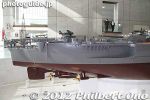
Jan 20, 2013
|
|
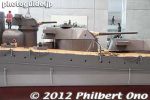
Jan 20, 2013
|
|
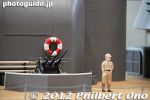
All aboard!Jan 20, 2013
|
|
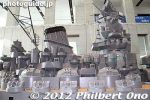
Jan 20, 2013
|
|

Jan 20, 2013
|
|
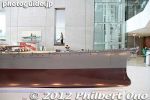
Jan 20, 2013
|
|
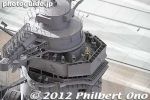
The model even has little human figures.Jan 20, 2013
|
|
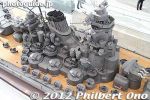
Jan 20, 2013
|
|
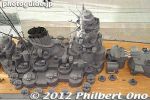
Jan 20, 2013
|
|
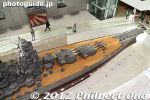
Jan 20, 2013
|
|
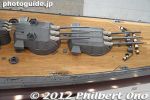
Jan 20, 2013
|
|
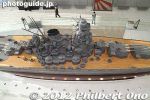
Jan 20, 2013
|
|

Jan 20, 2013
|
|
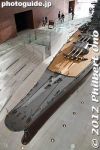
Jan 20, 2013
|
|

Jan 20, 2013
|
|
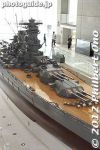
Jan 20, 2013
|
|

Jan 20, 2013
|
|
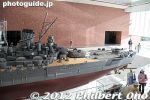
Jan 20, 2013
|
|
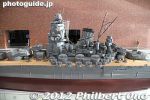
Since the Yamato was built in secrecy, there are very few clear photos of the ship.Jan 20, 2013
|
|
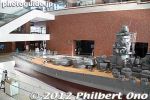
On her way to Okinawa, the Yamato was spotted by US submarines and aircraft and sunk by American carrier-based bombers and torpedo bombers on April 7, 1945.Jan 20, 2013
|
|
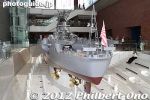
The Yamato's final mission was suicidal. It was ordered to go to Okinawa in April 1945 and beach herself offshore so it wouldn't sink. While beached, it would fire its guns at the enemy on Okinawa.Jan 20, 2013
|
|

"Yamato" is another name for Japan, and so it is a very revered and prestigious name for any ship. Many movies, anime, etc., have been based on Battleship Yamato which retains a strong cultural influence in Japan.Jan 20, 2013
|
|
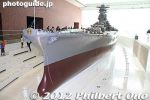
Battleship Yamato was commissioned a week after the Pearl Harbor attack in Dec. 1941. It was Japan's most powerful battleship and now legendary. It turned out to be great waste since the big guns were hardly used and it was sunk 4 years later. Jan 20, 2013
|
|
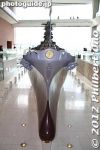
Battleship Yamato has an Imperial chrysanthemum crest on the bow. This was one of the things which helped to identify the wreck on the sea bottom.Jan 20, 2013
|
|
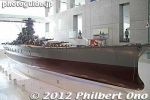
The scale model of the battleship is 26.3 meters long. It has been reconstructed as accurately as possible based on photographs and exploration of the wreck.Jan 20, 2013
|
|
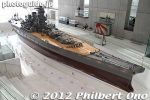
Yamato Museum's main attraction is this large scale model of Battleship Yamato. You can walk around it. This area of the museum is called Yamato Hiroba.Jan 20, 2013
|
|
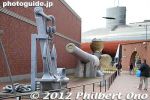
Outside the museum, a battleship gun and anchor are displayed.Jan 20, 2013
|
|

The Yamato Museum is open 9 am to 6 pm (enter by 5:30 pm). Admission is 500 yen for adults, 300 yen for high schoolers, and 200 yen for kids. Battleship Yamato was built in Kure.Jan 20, 2013
|
|
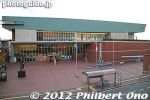
Yamato Museum's official name is Kure Maritime Museum. Although the 1/10 scale model of Battleship Yamato is the main attraction, it also has other exhibits explaining Kure's maritime history.Jan 20, 2013
|
|

Welcome to Kure.Jan 20, 2013
|
|
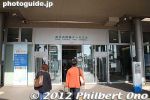
Entering Kure Port terminal.Jan 20, 2013
|
|
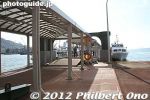
Kure Port dock.Jan 20, 2013
|
|
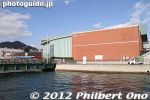
Back of the Yamato Museum facing Kure Port. Jan 20, 2013
|
|
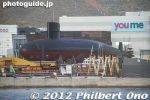
We could also see the submarine museum at the JMSDF Kure Museum adjacent to the Yamato Museum.Jan 20, 2013
|
|
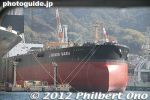
Kure is a major shipbuilding town.Jan 20, 2013
|
|
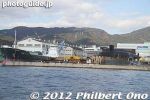
From the boat, we could see the dock where the Battleship Yamato was built in Kure, Hiroshima. "Kure" is pronounced "Kuray" not like the word "cure."Jan 20, 2013
|
|
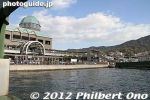
Kure Port in Hiroshima Prefecture. We arrived from Etajima island across the Seto Inland Sea. Kure is also a short train ride from Hiroshima Station.Jan 20, 2013
|
|
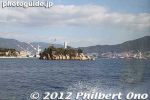
A few islands in the Seto Inland Sea on the way to Kure. In Kure, we visited the Yamato Museum.Jan 14, 2013
|
|
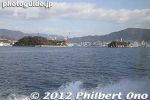
On the way to Kure.Jan 14, 2013
|
|
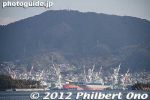
Kure is a short boat ride from Etajima.Jan 14, 2013
|
|
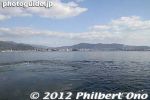
Kure across the Inland Sea.Jan 14, 2013
|
|
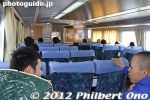
Inside our boat to Kure from Etajima.Jan 14, 2013
|
|
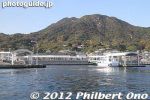
Leaving Koyo Port, Etajima.Jan 14, 2013
|
|
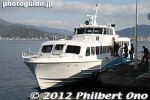
Our boat for Kure from Etajima island.Jan 14, 2013
|
|
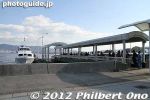
Koyo Port on Etajima, Hiroshima.Jan 14, 2013
|
|
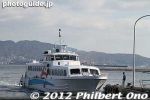
Back at Koyo Port to board this boat for Kure, across the Seto Inland Sea.Jan 14, 2013
|
|
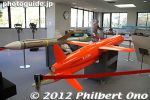
Etajima Club exhibition room.Jan 14, 2013
|
|
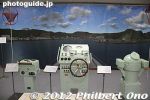
Jan 14, 2013
|
|
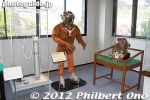
Jan 14, 2013
|
|
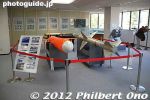
Jan 14, 2013
|
|
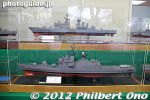
Models of navy warships.Jan 14, 2013
|
|
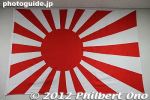
Japanese navy rising sun flagJan 14, 2013
|
|
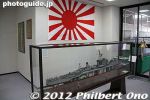
Jan 14, 2013
|
|
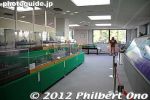
Last stop on the tour was the Etajima Club where there is a gift shop, restaurant, and this small museum on the 2nd floor.Jan 14, 2013
|
|
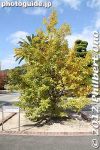
Jan 14, 2013
|
|
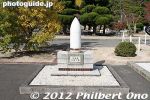
Projectile used in Japan-China War in 1894.Jan 14, 2013
|
|
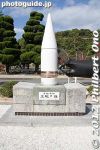
A projectile used by battleship Yamato during WWⅡ.Jan 14, 2013
|
|

Jan 14, 2013
|
|
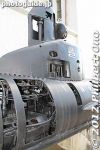
Jan 14, 2013
|
|
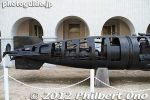
Jan 14, 2013
|
|

Jan 14, 2013
|
|
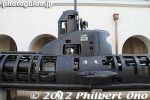
Jan 14, 2013
|
|
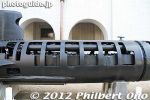
Jan 14, 2013
|
|
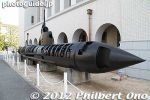
Behind the midget sub used in Pearl Harbor, another different type of midget sub is displayed.Jan 14, 2013
|
|
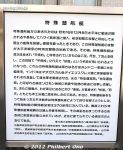
Jan 14, 2013
|
|

Jan 14, 2013
|
|
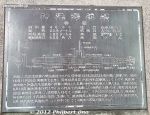
About this midget sub: Length: 23.9 meters, Weight: 46 tons, Inner diameter: 1.85 meter, Underwater speed: 19 knots (600 horsepower)Jan 14, 2013
|
|
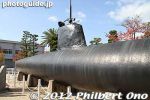
This midget sub was transported by boat from Pearl Harbor to Yokosuka (Kanagawa Pref.), then to Etajima in 1961.Jan 14, 2013
|
|
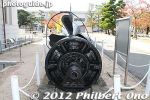
Jan 14, 2013
|
|
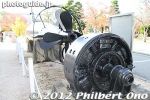
Jan 14, 2013
|
|
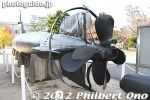
They eventually found all five subs (the fifth one was finally found in 2009) used at Pearl Harbor. Two of them are on display. One of them is here and the other is at the National Museum of the Pacific War in Fredericksburg, Texas.Jan 14, 2013
|
|
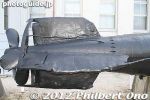
Midget sub's rudder and propeller.Jan 14, 2013
|
|
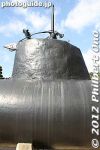
Midget sub's conning tower and periscope. The sub had only two crew members.Jan 14, 2013
|
|
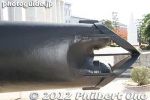
It was subsequently salvaged and restored for display at Etajima in 1962. The front part of the sub was severed, so the front part was reconstructed by a Kure shipbuilder for this display.Jan 14, 2013
|
|
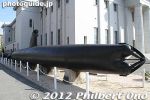
The midget sub displayed here was found in 1960 off Keehi Lagoon east of Pearl Harbor's entrance. The sub had been damaged by a depth charge attack and abandoned by its crew before it could fire its torpedoes.Jan 14, 2013
|
|
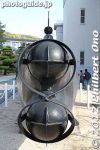
Torpedo bay of midget submarine used in Pearl Harbor attack.Jan 14, 2013
|
|
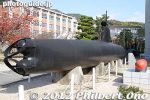
One of the five midget submarines used in the Pearl Harbor attack. On display at the Naval History Museum on Etajima island, Hiroshima.Jan 14, 2013
|
|
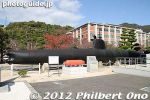
The Naval History Museum on Etajima has this outdoor display of one of the five midget submarines used in the Pearl Harbor attack.Jan 14, 2013
|
|
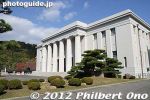
Naval History Museum on Etajima. Built in 1936, the museum is substantial with detailed exhibits tracing Japan's naval history (including the Pearl Harbor attack). Jan 14, 2013
|
|
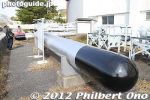
Jan 14, 2013
|
|
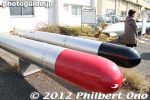
TorpedoesJan 14, 2013
|
|
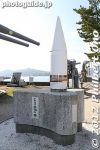
Projectile of a "Mutsu" class battleship.Jan 14, 2013
|
|
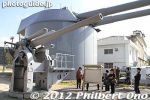
Gun turretsJan 14, 2013
|
|
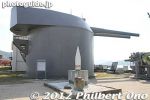
The Gun turret was a part of the main gunnery system of Battleship Mutsu and was transferred to Imperial Naval Academy for use as a study aide in 1935.Jan 14, 2013
|
|
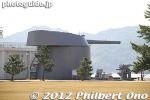
Battleship gun, life-size.Jan 14, 2013
|
|
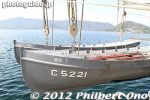
Training boatsJan 14, 2013
|
|
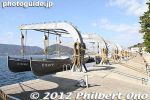
Training boatsJan 14, 2013
|
|
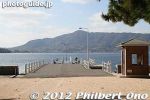
Front Pier. This is considered the school's front gate instead of the gate on land. Officer Candidate School graduates are sent off here by school staff and a military band and transferred to a training fleet anchored offshore in Etauchi inlet.Jan 14, 2013
|
|
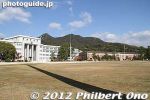
Jan 14, 2013
|
|
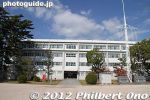
Jan 14, 2013
|
|
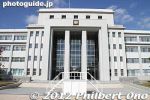
Students' Hall west wing. We weren't allowed to enter this building. The Academy also has female students, but after graduating they do not serve on navy ships. They work only on land.Jan 14, 2013
|
|
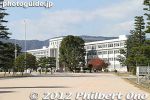
Students' Hall west wing. Built in 1938, it is used as the main students’ hall of the First Service School.Jan 14, 2013
|
|
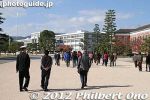
Jan 14, 2013
|
|
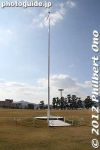
Jan 14, 2013
|
|
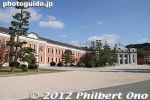
Jan 14, 2013
|
|
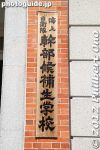
Jan 14, 2013
|
|
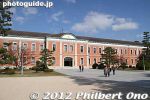
Jan 14, 2013
|
|
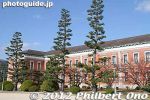
Jan 14, 2013
|
|
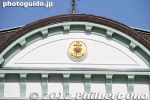
Jan 14, 2013
|
|
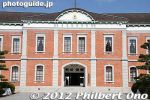
Built in 1893 and used for classrooms and living quarters for students. Today, it is part of the Officer Candidate School and used as classrooms and students' living quarters. Etajima, Hiroshima.Jan 14, 2013
|
|
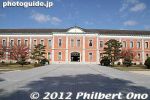
The academy's most distinctive building is this Students’ Hall dubbed the "Red Brick Building." We weren't allowed to go inside. Etajima, Hiroshima.Jan 14, 2013
|
|
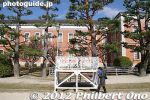
Stand for gatherings.Jan 14, 2013
|
|
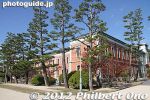
The academy's pine tree trunks grow straight up. They say that even the pine trees stand at attention at the school.Jan 14, 2013
|
|
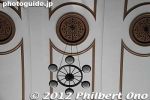
The lights look like a ship's wheel on the ceiling of the Ceremonial Hall.Jan 14, 2013
|
|
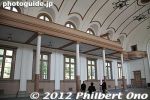
Ceremonial HallJan 14, 2013
|
|
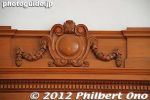
Jan 14, 2013
|
|
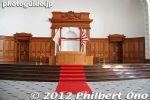
Stage inside the Ceremonial Hall.Jan 14, 2013
|
|
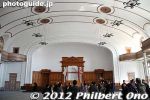
Inside the Ceremonial Hall. It can fit 2,000 people.Jan 14, 2013
|
|
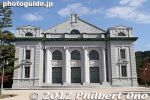
Ceremonial Hall. Built in 1917 and designed for holding ceremonies and moral education. One of the few buildings which we could enter. Etajima, Hiroshima.Jan 14, 2013
|
|
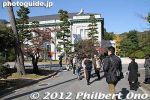
Two Naval Academy students served as our tour guide.Jan 14, 2013
|
|
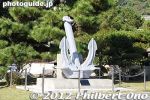
You cannot tour the Naval Academy on your own. You have to join the guided tour. There is a dress code: No miniskirts or provocative clothing by women.Jan 14, 2013
|
|

Map of the Naval Academy or Japanese Maritime Self Defense Force First Service School (海上自衛隊第1術科学校).Jan 14, 2013
|
|

The Naval Academy conducts free guided tours of the school 3 or 4 times a day. The tour takes you around the campus and allows you to enter a few of the imposing buildings.Jan 14, 2013
|
|
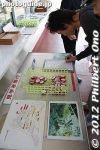
Reservations are not required, but you have to get there and sign up 5 min. before the 90-min. tour starts.Jan 14, 2013
|
|
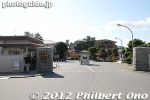
Entrance to the Naval Academy on Etajima.Jan 14, 2013
|
|
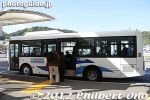
From Koyo Port, take a bus for a 5-min. ride to the Naval Academy. Or take a taxi if a bus is not available.Jan 14, 2013
|
|
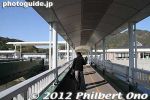
Etajima's Koyo Port. Jan 14, 2013
|
|
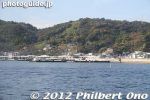
Approaching Etajima's Koyo Port. Jan 14, 2013
|
|
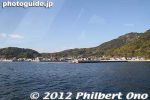
Jan 14, 2013
|
|
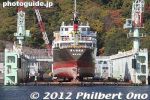
Shipbuilding on Etajima, Hiroshima.Jan 14, 2013
|
|
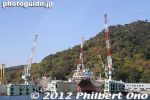
Jan 14, 2013
|
|
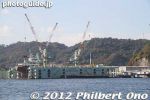
Etajima also has shipbuilding facilities.Jan 14, 2013
|
|
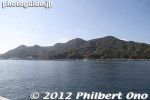
Jan 14, 2013
|
|
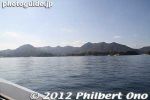
Jan 14, 2013
|
|
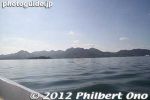
Etajima island in view.Jan 14, 2013
|
|

Leaving Hiroshima Port for Etajima island. This is a cargo ship for vehicles called Genuine Ace.Jan 14, 2013
|
|
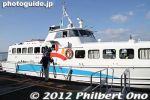
Boat for Etajima island, a short boat ride from Hiroshima Port. Jan 14, 2013
|
|
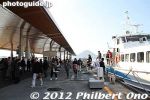
Hiroshima Port.Jan 14, 2013
|
|
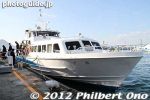
Boat for Etajima island. From Hiroshima Port, it takes about 25 min. to Etajima's Koyo Port, closest to the Naval Academy.Jan 14, 2013
|
|
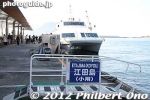
Hiroshima Port.Jan 14, 2013
|
|
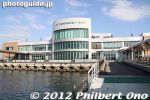
Hiroshima Port as seen from a dock.Jan 14, 2013
|
|
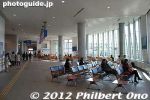
Hiroshima Port.Jan 14, 2013
|
|
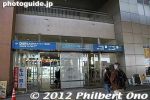
Hiroshima Port.Jan 14, 2013
|
|
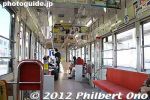
From Hiroshima Station, it takes about 35 min. to Hiroshima Port via streetcar.Jan 14, 2013
|
|

Hiroshima is also famous for okonomiyaki.Jan 14, 2013
|
|
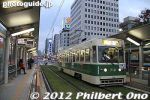
Streetcar station near Hiroshima Atomic Bomb Dome.Jan 14, 2013
|
|
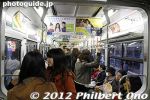
Inside a street car in Hiroshima.Jan 14, 2013
|
|
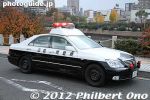
Hiroshima police car.Jan 14, 2013
|
|
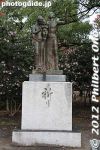
Jan 14, 2013
|
|
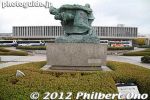
Front of the Hiroshima Peace Memorial Museum (opposite side from the Cenotaph) and Statue of Mother and Child in the Storm.Jan 14, 2013
|
|
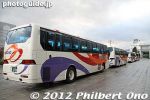
Many buses in front of the museum.Jan 14, 2013
|
|
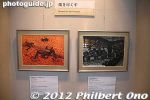
Jan 14, 2013
|
|
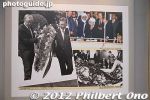
President Jimmy Carter visited Hiroshima after he left office.Jan 14, 2013
|
|
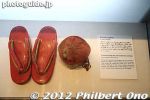
Jan 14, 2013
|
|

Jan 14, 2013
|
|
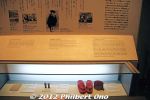
About Sadako.Jan 14, 2013
|
|
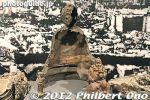
Damaged Buddha statue.Jan 14, 2013
|
|
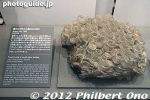
Glass bottles melted together.Jan 14, 2013
|
|
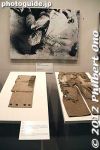
Jan 14, 2013
|
|
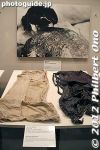
Jan 14, 2013
|
|
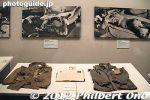
Grisly photos and tattered clothing.Jan 14, 2013
|
|

About the tricycle.Jan 14, 2013
|
|
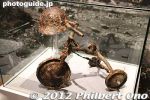
TricycleJan 14, 2013
|
|

Jan 14, 2013
|
|
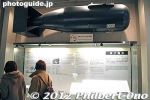
Life-size replica of the Hiroshima bomb, nicknamed "Little Boy." It's about 3 meters long.Jan 14, 2013
|
|
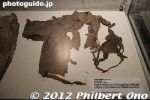
Tattered clothing from a 13-year-old girl who died in the evening on the day of the bomb.Jan 14, 2013
|
|
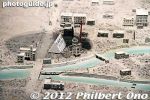
Atomic Bomb Dome area.Jan 14, 2013
|
|
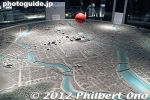
Orange ball shows where the bomb fell.Jan 14, 2013
|
|
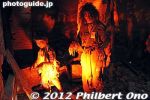
The original exhibit showed a much more horrific faces and disfigurement with peeling skin down to their knees at least. I heard that they didn't want to make it too scary for children. Too bad.Jan 14, 2013
|
|
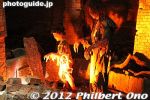
Mannequins depicting bomb victims who suffered peeling/melting skin among other things. This depiction has been toned down considerably from the original exhibit that I remember before the museum was renovated in 1994.Jan 14, 2013
|
|

Jan 14, 2013
|
|
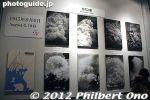
Photos of the atom bomb blast.Jan 14, 2013
|
|
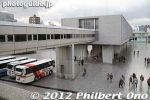
Corridor to the museum's main building or West Wing.Jan 14, 2013
|
|
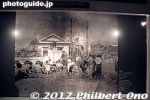
Jan 14, 2013
|
|

Jan 14, 2013
|
|
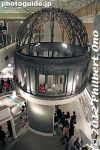
Jan 14, 2013
|
|
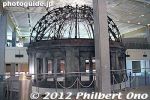
Scale model of the Atomic Bomb Dome.Jan 14, 2013
|
|
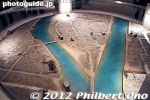
And how it looked after the bomb. The Peace Park is on the land in the center between the two rivers. The Atomic Bomb Dome is on the lower left.Jan 14, 2013
|
|
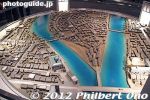
What central Hiroshima looked like before the bomb. The building that would become the Atomic Bomb Dome is on the lower left with the light green roof.Jan 14, 2013
|
|
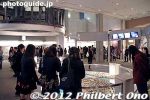
Jan 14, 2013
|
|
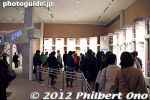
The East Wing explains the history of Hiroshima city before the bomb, development and decision to drop the bomb, the lives of Hiroshima citizens during World War II.Jan 14, 2013
|
|
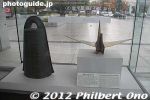
Original bell and origami sculpture for the Children's Peace Monument.Jan 14, 2013
|
|
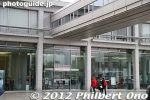
Entrance to Hiroshima Peace Memorial Museum through the East Wing. It has a lot of exhibits and can take a while to go through it if you want to read everythingJan 14, 2013
|
|
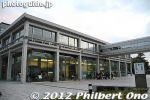
Hiroshima Peace Memorial Museum's East Wing built in 1994. You enter the museum through this building. Admission is only 50 yen for adults (30 yen for students).Jan 14, 2013
|
|
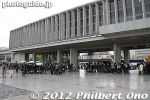
Main building of the Hiroshima Peace Memorial Museum with various exhibits explaining about the bombing and its effects. You also see many personal belongings mangled, melted, or tattered by the blast. Hordes of students on class trips from all over JapanHiroshima Peace Memorial Museum Jan 14, 2013
|
|
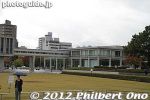
International Conference Center Hiroshima is also attached to the museum.Jan 14, 2013
|
|
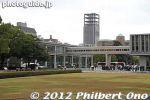
Hiroshima Peace Memorial Museum's East Wing built in 1994.Jan 14, 2013
|
|
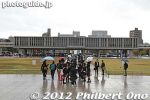
Hiroshima Peace Memorial MuseumJan 14, 2013
|
|

About the Hiroshima Peace Memorial Park.Jan 14, 2013
|
|
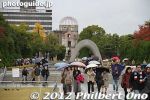
At least one blessing from the bomb is the endless stream of tourists coming to Hiroshima.Jan 14, 2013
|
|
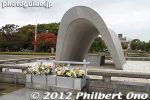
Jan 14, 2013
|
|
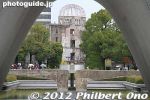
Atomic Bomb Dome as seen from the Cenotaph.Jan 14, 2013
|
|
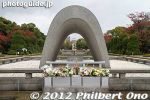
The Peace Park's focal point is this Memorial Cenotaph. It stores the names of all of the people killed by the bomb. The monument frames the Peace Flame and the A-Bomb Dome in a straight line.Jan 14, 2013
|
|

Jan 14, 2013
|
|
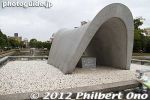
Memorial CenotaphJan 14, 2013
|
|
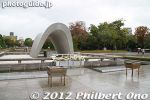
Memorial CenotaphJan 14, 2013
|
|
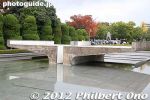
Peace Flame aligned with the Cenotaph and Atomic Bomb Dome. Jan 14, 2013
|
|
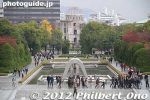
Memorial CenotaphJan 14, 2013
|
|
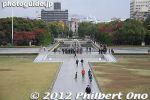
Jan 14, 2013
|
|
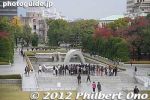
Memorial CenotaphJan 14, 2013
|
|
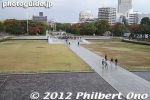
This is where the Hiroshima Peace Memorial Ceremony is held on Aug. 6 in the morning. The service is open to the public for free and you can sit if you get there early enough in the morning. Otherwise, you can stand in the back amid the sweltering heat.Jan 14, 2013
|
|

About the rest house.Jan 14, 2013
|
|
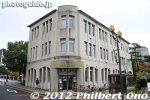
Another building that survived the atom bomb. Now a rest house and tourist information center. Hiroshima.Jan 14, 2013
|
|
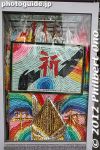
Pictures made of origami at Hiroshima Peace park.Jan 14, 2013
|
|
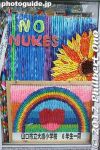
HiroshimaJan 14, 2013
|
|
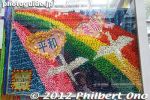
Jan 14, 2013
|
|
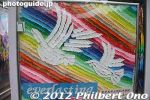
Jan 14, 2013
|
|

There's a sign indicating where you should hang your origami cranes.Jan 14, 2013
|
|

Very colorful and incredible designs.Jan 14, 2013
|
|
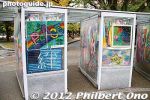
Shacks of origami paper cranes folded by many students from all over.Jan 14, 2013
|
|

About the Children's Peace Monument.Jan 14, 2013
|
|
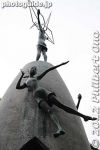
Rear of Children's Peace Monument, Hiroshima.Jan 14, 2013
|
|
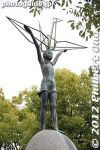
Children's Peace Monument, HiroshimaJan 14, 2013
|
|

Bell in Children's Peace Monument.Jan 14, 2013
|
|
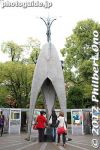
Children's Peace MonumentJan 14, 2013
|
|
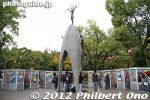
Children's Peace Monument dedicated to the memory of the children who died as a result of the bombing.Jan 14, 2013
|
|

Jan 14, 2013
|
|

Donors of benches.Jan 14, 2013
|
|
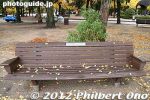
Donated benches.Jan 14, 2013
|
|
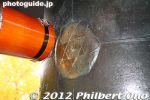
Hiroshima Peace Bell with atom symbol on the sweet spot.Jan 14, 2013
|
|

About the Peace BellJan 14, 2013
|
|
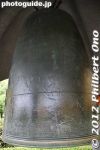
Hiroshima Peace BellJan 14, 2013
|
|
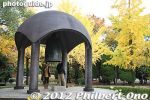
Peace Bell. Peace Bell. Anyone can ring it for free.Jan 14, 2013
|
|

Peace Clock TowerJan 14, 2013
|
|
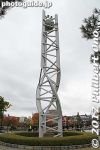
Peace Clock TowerJan 14, 2013
|
|
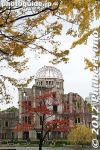
Jan 14, 2013
|
|
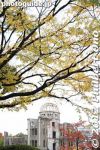
Jan 14, 2013
|
|
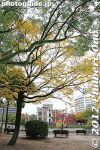
Jan 14, 2013
|
|
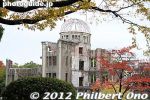
Jan 14, 2013
|
|
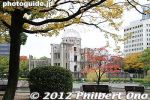
Jan 14, 2013
|
|
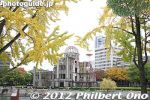
Jan 14, 2013
|
|
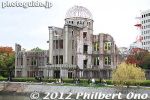
Jan 14, 2013
|
|
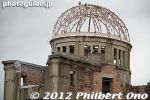
Jan 14, 2013
|
|
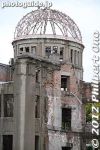
Jan 14, 2013
|
|
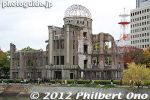
Jan 14, 2013
|
|

Jan 14, 2013
|
|
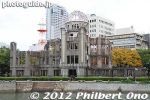
Jan 14, 2013
|
|
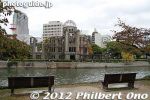
Jan 14, 2013
|
|
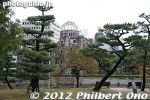
Jan 14, 2013
|
|
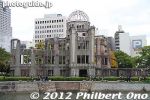
Jan 14, 2013
|
|
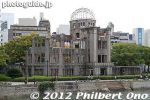
Jan 14, 2013
|
|
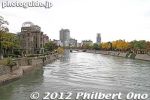
View from Aioi Bridge.Jan 14, 2013
|
|

Jan 14, 2013
|
|
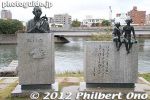
Monuments abound in the Peace Park. In the background is Aioi Bridge, the original target of the atomic bomb.Jan 14, 2013
|
|
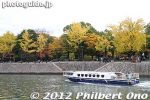
Jan 14, 2013
|
|
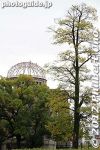
Jan 14, 2013
|
|
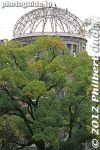
Hiroshima Atom Bomb DomeJan 14, 2013
|
|

Jan 14, 2013
|
|

Jan 14, 2013
|
|
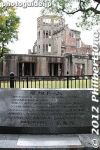
Jan 14, 2013
|
|
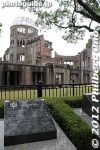
Jan 14, 2013
|
|
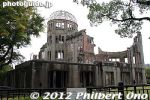
Jan 14, 2013
|
|
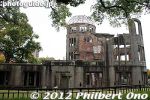
Jan 14, 2013
|
|
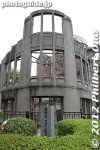
Jan 14, 2013
|
|
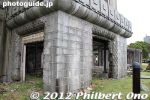
We can get quite close to the building, but it is fenced off so we cannot enter it.Jan 14, 2013
|
|
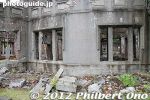
Jan 14, 2013
|
|
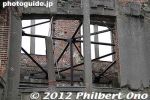
Notice the steel braces to reinforce the building.Jan 14, 2013
|
|
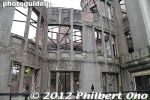
Jan 14, 2013
|
|
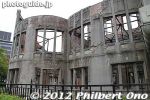
Notice the steel braces to reinforce the building.Jan 14, 2013
|
|
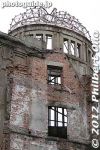
I think all Americans visiting or living in Japan should visit Hiroshima. It's not about who's to blame for what happened here in Aug. 1945. It's about a major event in human history and a reminder of man's fatal flaws.Jan 14, 2013
|
|
|
|